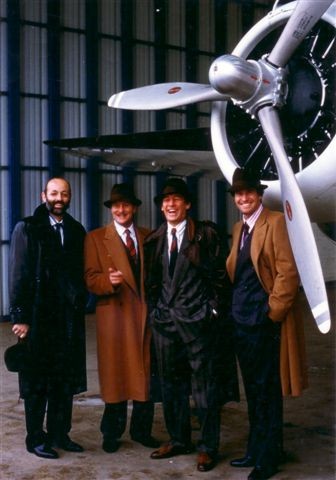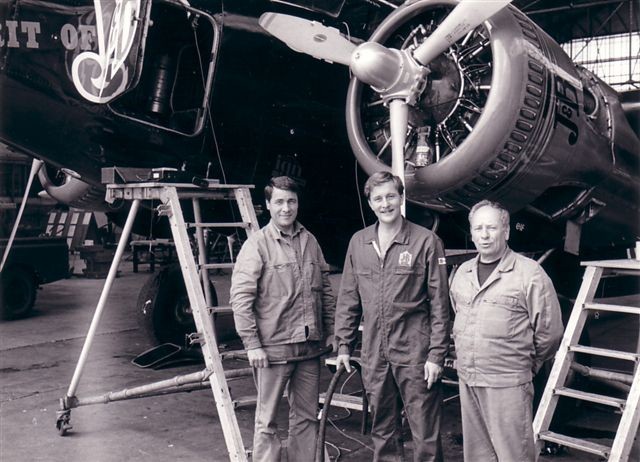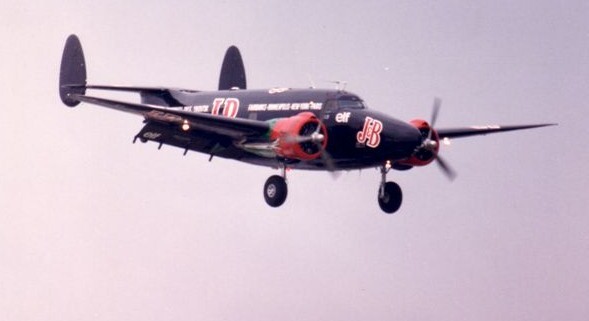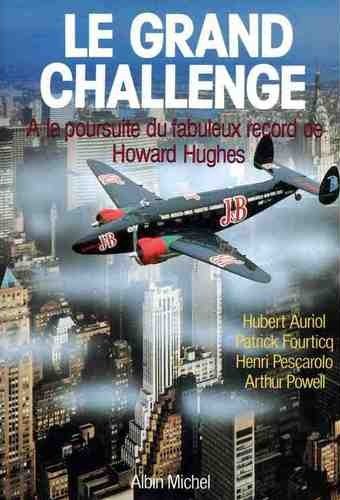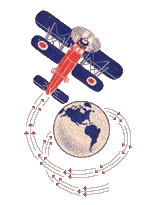
Round-the-World Flights
Fourticq follows Hughes Round-the-World Flight
Page 7s (rev: 1005)




In July 10, 1938 Howard Hughes and his crew departed Floyd Bennett Field, Long Island New York and flew round-the-world in a Lockheed 14 Lodestar. After circling the globe covering 14,672 miles in three days, nineteen hours, fourteen minutes and ten seconds, they returned to NY. Hughes 1938 round-the-world flight had taken just over 91 hours and established a record to be beaten sometime in the future.
In 1984 racing driver, Henri Pescarolo and Air France pilot, Patrick Fourticq landed their Piper Malibu in Paris France after a flight from New York, setting a speed record of 14 hours 2 minutes for a single-engined aircraft across the North Atlantic. Breaking speed records wet their appetite for more sensational flights.
In June, 1987 Patrick Fourticq with his crew, Henri Pescarolo, Hubert Auriol and Arthur Powell took up the challenge to beat Hughes and flew into the record books making a similar circumnavigation in 88 hours and 48 minutes. The book, The Great Challenge (Le Grand Challenge) by Jean Yves Montagu, details this audacious challenge flight.
The Lockheed 18 Lodestar (N7001) that Fourticq captained was basically a lengthened version of the Lockheed 14. This Lodestar had been scraped in an aircraft grave-yard in the Bahamas being used as a giant chicken-coop. It was purchased by Justerini & Brooks and transported to Fort Lauderdale FL. Don Haynes Aviation, a certified "Airframe and Power-plant" outfit accepted the challenge to make the aircraft airworthy for its ferry-flight to France. Professional Flight Engineer and certified Airframe & Power-plant Mechanic, Art Powell headed up the efforts to bring the Lodestar back to operational life. Art's extensive aircraft/engine knowledge and ability earned him an invitation to become one of the crew on the upcoming round-the-world flight attempt. The aircraft was ferried to France where Art joined Fourticq and the others. For the next eight months the Lodestar was fully restored and prepared for its round-the-world flight by Art and his crew of French mechanics. The aircraft remained US registered.
Patrick Fourticq selected his crew. Henri Pescarolo (race car speed record holder & pilot) and Hubert Auriol (motorcycle speed record holder & pilot) together with Art Powell (engineer & pilot) would make the round-the-world flight attempt. Justerini & Brooks named the Lodestar, "Spirit of J&B."
The flight departed the Paris Air Show on June 17, 1987.
It was intended to follow the flight path of Howard Hughes in 1938. Before the intended departure, Russian Aviation authorities withdrew authorization for them to pass through Russia. Russia's refusal for such overflight was based on a recent incident where a German lad landed a Cessna-172 in Moscow's Red Square.
Accordingly, Fourticq and his crew modified their flight path avoiding Russian air space. Their flight path took them to Svalbard Norway, over the north pole to Fairbanks AK, to Vancouver British Columbia Canada, Los Angeles CA, Miami FL, New York NY, Gander Newfoundland, returning to the Paris Air Show on June 21, 1987. While in New York 35,000 ping-pong balls were loaded in the belly of the aircraft in case of an ocean-ditching over the Atlantic as this was also done by Howard Hughes. The Lockheed 18 Lodestar circumnavigation covered 14,587 miles in 88H 48M beating Hughes' 1938 Lockheed 14 Lodestar flight.
Several in-flight technical problems (a compass failure, a fuel leak and an oil leak) were overcome with equipment changes and quick-response ingenuity. All four of the men took turns flying the aircraft and/or performed navigational functions during the 3 1/2 day trip.
"Nous battons Hughes" - We beat Hughes!

RETURN to Home Page.


